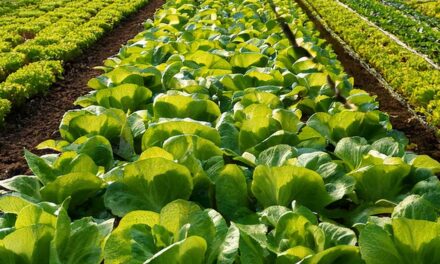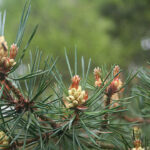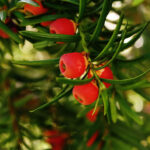
Green Manures: Boost Soil Health and Control Weeds

Rethinking Empty Beds Over Winter
As autumn arrives and my beds begin to empty, I often face a common gardener’s dilemma: how best to look after the soil during the colder months. I initially covered these beds with plastic sheeting, hoping to protect the soil from erosion and suppress weeds until spring. But while plastic seemed like a straightforward solution, it had its drawbacks. Within just a few months, the sheets would start to deteriorate, becoming visually unappealing and difficult to manage, especially if they tore or shifted in the wind. After experimenting with different approaches, I began exploring natural methods to prepare the soil for its “off-season.”
This led me to green manures—plants grown specifically to cover and enrich the soil between main crops. Green manures appealed to me for a few reasons. They create a lush, green cover that’s visually far more appealing than plastic, adding a natural beauty to the allotment even in winter. And, unlike plastic, these plants contribute valuable nutrients and organic matter back into the soil, supporting its overall health and resilience. Beyond looking better, green manures also act as a barrier against weeds, which are often quick to establish in any empty bed.
Growing plants as soil cover felt like a significant shift from simply “covering up” the beds to actively supporting the soil’s health. By the time spring rolls around, these green manures can be dug back into the soil, breaking down and enriching it naturally for the next growing season. It’s a method that feels far more aligned with nature’s cycles, benefiting both the soil and future crops.
What Are Green Manures?
Green manures are plants grown to protect and enrich the soil, rather than for harvest. Known as “cover crops,” they spread over the soil and prevent erosion, acting like a natural barrier against wind and rain. When you dig them in, they break down and release valuable nutrients, turning into organic matter that contributes to soil health.
These cover crops mimic natural cycles. As they grow, they pull in nutrients and stabilize soil. When turned into the soil, they decompose and feed soil life. Unlike plastic or synthetic covers, green manures add organic matter to the soil. Each variety has unique properties, so you can choose one that suits your soil needs and season.
Boosting Soil Naturally
Green manures bring a range of benefits to your soil. Here’s a breakdown of how they help:
-
Suppressing Weeds: Green manures grow densely, shading out weeds and keeping soil from becoming overrun. This dense growth is particularly helpful in winter, reducing weeds without much effort.
-
Boosting Soil Fertility: Some green manures, like clover and vetch, naturally pull nitrogen from the air into the soil. Others, such as buckwheat, draw up phosphorus, adding nutrients for future crops in a sustainable way.
-
Improving Soil Structure: Green manures with deep roots, like rye and alfalfa, break up compacted soil and create channels for air and water. This improved structure leads to healthier plant growth and better soil moisture retention.
-
Attracting Beneficial Insects: Certain green manures, such as buckwheat and clover, attract pollinators and helpful insects. These plants provide food and shelter for beneficial bugs, which helps keep pests under control without chemicals.
-
Preventing Runoff and Erosion: Covering soil with green manures anchors it in place during heavy rains. Their roots hold the soil, reducing runoff and keeping nutrients where they belong.
Common Types of Green Manures
Not all green manures offer the same benefits. Each type has unique traits that suit specific soil needs, weather conditions, and gardening goals. Some, like legumes, add nitrogen to the soil. Others, with dense root systems, help improve soil structure and prevent erosion. There are also fast-growing types that quickly cover soil, suppress weeds, and add organic matter within a single season. These variations allow gardeners to choose a green manure that supports soil health in just the right way.
The key is to select a crop that suits both the season and the needs of your soil and future plants. Below, we’ll look at some popular options—from hardy winter covers like forage rye to nitrogen-boosting legumes like vetch and clover—and see how each can benefit your beds during their downtime.
How to Use Green Manures
Using green manures is straightforward, but timing and technique can make a big difference in their effectiveness. Here’s a step-by-step guide on how to get the most from your green manure crops:
-
Sowing: Plant green manures after harvesting summer crops, or early in autumn to allow for root establishment before winter. Sow seeds directly over empty beds, scattering them evenly for full coverage. Lightly rake the soil to ensure good seed-to-soil contact, which will help the plants germinate and establish quickly.
-
Growing Period: Let your green manures grow for a few months, depending on the variety and weather. Hardy types like forage rye are ideal for winter cover and can stay in the soil through colder months. This period allows the plants to suppress weeds, retain moisture, and add organic matter to the soil.
-
Incorporation into the Soil: Before the green manure plants flower, cut or chop them down to prevent them from seeding. Allow the foliage to wilt for a day or two, which makes digging them in easier. Then, turn them into the soil using a spade or fork to mix the green matter well into the topsoil. This releases nutrients as the plants decompose, improving soil structure and fertility. For spring planting, dig in green manures at least two to four weeks beforehand to allow time for decomposition.
-
Resting Period: After turning in the green manure, give the soil a couple of weeks to settle and process the decomposing organic matter. During this period, beneficial microorganisms break down the plants, making nutrients available for your next crop cycle.
Green manures have transformed how I care for fallow beds. Instead of leaving soil bare, I’ll use crops like vetch, clover, and forage rye to enrich and protect the soil. Moving forward, I’ll choose green manures based on seasonal needs. Quick-growing buckwheat can help in summer, while nitrogen-fixing vetch will support demanding spring crops.
From building soil structure to supporting beneficial insects, green manures offer more than just a ground cover. They will be a key part of my allotment’s cycle, nourishing the soil and supporting a productive, sustainable garden.












